The company's main products are HGM series micro pulverizer, superfine micro pulverizer, micro pulverizer, superfine pulverizer, pulverizer and matching hammer crusher, etc.
28/04/2023 admin
Light-burned magnesia powder is a commonly used magnesia product. Due to its small particle size, small specific surface area, large volume and high activity, it has high reactivity and adsorption performance. Widely used in fireproof materials, ceramic materials, electronic materials and other fields.
1. Physical and chemical properties of light-burned magnesia powder
Light-burned magnesia, also known as active magnesia or caustic magnesia, is magnesia formed by calcining magnesium compounds at 700-900°C. Light-burned magnesia has a density of 2.94g/cm3 and a melting point of 2852°C, boiling point 3600°C, soluble in acid and ammonium salt, insoluble in water and ethanol.
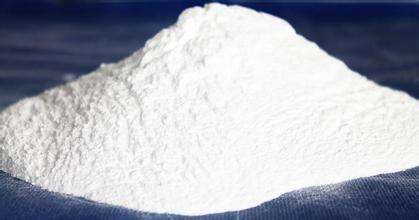
2. The main application of light-burned magnesia powder
Light-burned magnesia is an important raw material for the preparation of high-function fine inorganic materials, electronic components, inks, and harmful gas adsorbents. It is expected to be developed into advanced materials under harsh conditions such as high temperature and high corrosion and can also be used as a filler for paint, paper, and cosmetics, plastic and rubber fillers and reinforcing agents, and auxiliary materials for various electronic materials.
In the building materials industry, it is used to produce magnesium sulfate, magnesium nitrate, magnesium hydroxide, etc.; in the pharmaceutical industry, it is used to prepare antacids and laxatives; it is mainly used as a decolorizing agent in the food processing industry.
Light-burned magnesia is the main raw material of magnesia gelling material products. It is used in the production of magnesium-made gelling products. The light-burned magnesia and magnesium chloride (magnesium sulfate) aqueous solution are mixed in a certain proportion, which can be gelled and hardened into a certain physical strength. Hardened body with mechanical properties, so it is also called magnesium cement. As a new type of cement, magnesium cement has the advantages of light weight, high fire resistance, heat insulation, energy saving and environmental protection, and can be widely used in building materials, municipal, agriculture, machinery and other fields, such as decorative panels, sanitary ware, ceilings, floor tiles, ventilation pipes , Anti-theft manhole covers, fire doors and windows, fire boards, partition boards, artificial marble, magnesium tiles, packing boxes, etc., as well as abrasive tools, stoves, pyrotechnic primers, etc.
3. The difference between heavy-burned and light-burned magnesia powder
Light-burned magnesia refers to the magnesia produced by calcination at 700-900°C. This magnesia generally has better reactivity. Light-burned magnesia is mainly used as a raw material for preparing ceramics, enamel, refractory crucibles and refractory bricks. It is also used as a polishing agent, adhesive, filler for paint and paper, and an accelerator and activator for neoprene and fluor rubber. In medicine, it is used as an antacid and laxative, for hyperacidity, gastric and duodenal ulcer disease, and in the chemical industry as a catalyst and a raw material for the manufacture of magnesium salts.
Dead-burned magnesia refers to magnesia calcined at a temperature above 1000°C, which is used for refractory materials, smelting, etc., and can also be used for the production of other magnesium salts. The material field is mainly used for the preparation of refractory materials.
4. The difference between bitter soil powder and light-burned magnesia powder
Light-burned magnesia is made of high-grade ore at a temperature of 700-900°C. Its magnesia content is 70%-95%, and its active magnesia content is 40%-70%. However, low-grade ore is directly calcined without beneficiation treatment, and the calcination temperature is only 600-700°C. The magnesia produced, commonly known as bitter soil powder, is a low-grade gelling magnesia with a low magnesia content. More than 70%, the active content is less than 40%. In principle, bitter earth powder cannot be used to prepare magnesium cement. Light-burned magnesia and bitter earth powder cannot be confused. They are very different in production methods and properties.
The manufacturing process of light-calcined magnesia powder usually adopts a light-calcined process, that is, magnesia powder is slightly calcined at high temperature to change its crystal structure while maintaining its specific surface area and reactivity. The light-burned magnesia powder produced has white color, high crystallinity and good activity, which can meet the needs of magnesia in various fields.
According to the magnesia grinding process, lightly burnt powder (about 200 meshes) is further calcined into magnesia after briquetting. The quality of fused magnesia grinding powder is related to the density of the briquetting ball. For high-quality magnesia, in addition to the content of magnesium oxide, there is also the need to press light-burned magnesia into high-density balls. To form high-density high-balls, light-burned magnesia powder must be reground from about 200 mesh to more than 400 mesh.
HGM ultra-fine grinding machine is an industrial grinding equipment independently developed and produced by SBM micro-powder technology. It has the advantages of small footprint, high operating efficiency, energy saving and environmental protection. The ultra-fine grinding mill can process non-metallic ores with Mohs hardness less than 7 (dolomite, marble, talc, limestone, barite, etc.) and other non-flammable and explosive solid materials (shells, bamboo, coconut shells, glass, etc.), the fineness can be freely adjusted between 150-3000 mesh.
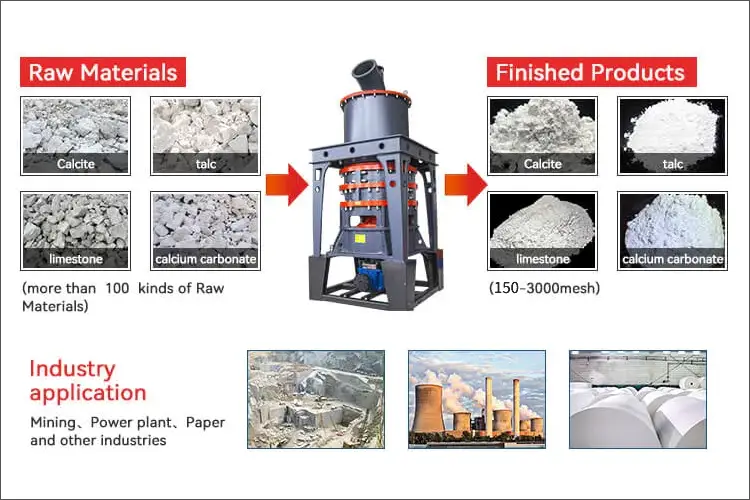
When working, the main shaft of the ultra-fine ring roller mill drives the turntables of each layer to rotate, and the turntable drives the three-layer (or four-layer) ring rollers to roll in the grinding ring roller table through the pins. The material is evenly sent to the middle of the upper turntable through the feeding port. The materials are scattered to the periphery of the circle under the action of centrifugal force and fall into the roller table of the grinding ring to be crushed, rolled and ground by the ring rollers. After being crushed in the first layer, the materials fall into the second and third layers for further crushing.
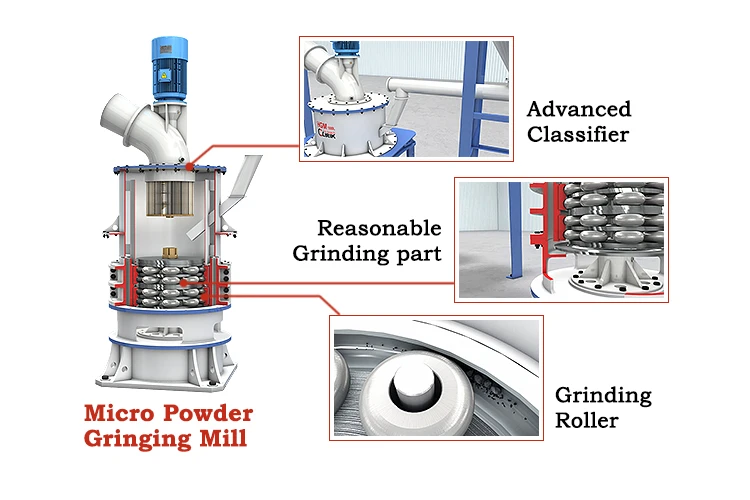
HGM ultra-fine ring roller mill has the advantages of high output, low energy consumption, high fineness, high safety and reliability, clean and environmental protection, safe operation and low operating cost. Its complete production line also includes crushing equipment (jaw crusher, cone crusher, impact crusher, etc., configured according to demand), elevator, feeder, powder collector, packaging machine, silencer, etc. The entire production line works under negative pressure, without dust spillage, and is environmentally friendly and pollution-free. Moreover, the production line is intelligently controlled, easy to maintain, and labor-saving.
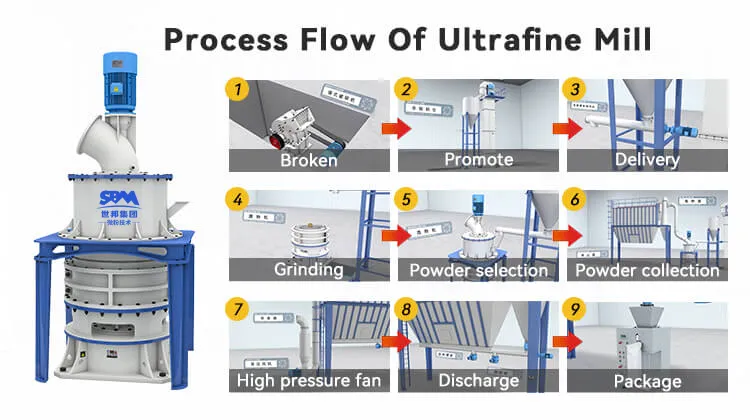
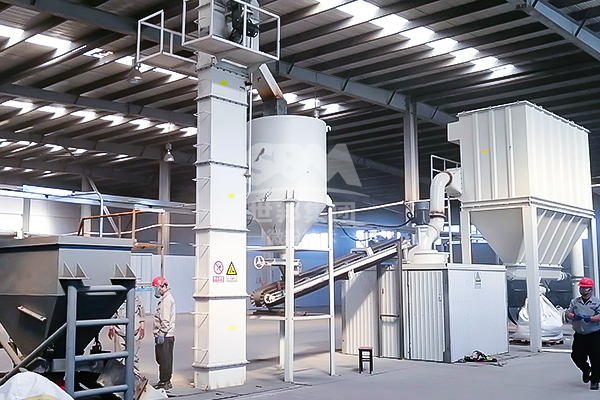
Magnesium Oxide Grinding Project in Qinghai, China
Raw material: Light-burned magnesia
Capacity: 120,000 tons/year
Discharge fineness: D90<12μm; D50<5μm
Finished material and application: high-density and high-purity magnesium oxide (for refractory materials)
If you have some questions about our products, please feel free to fill out the form below, and we will contact you within 24 hours.